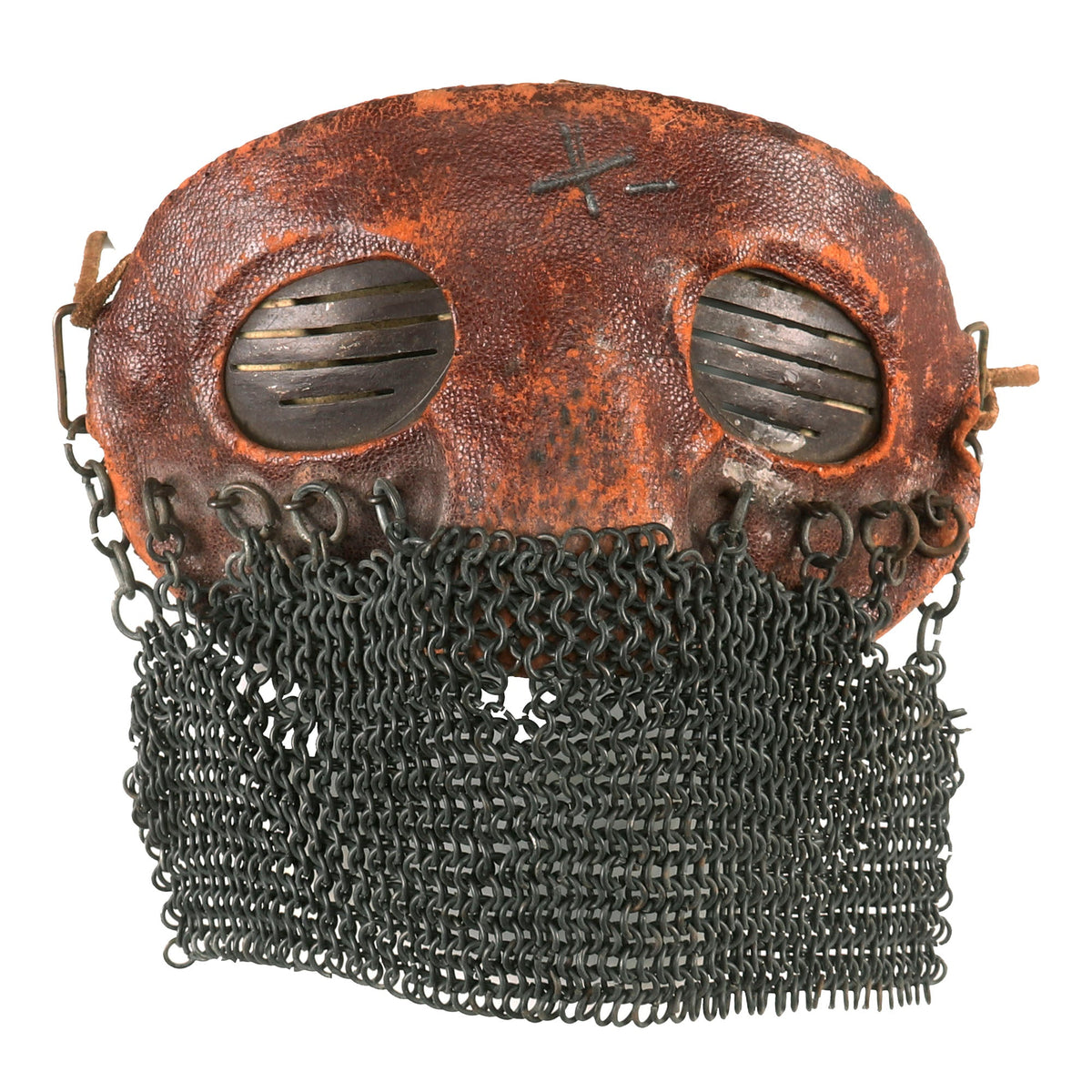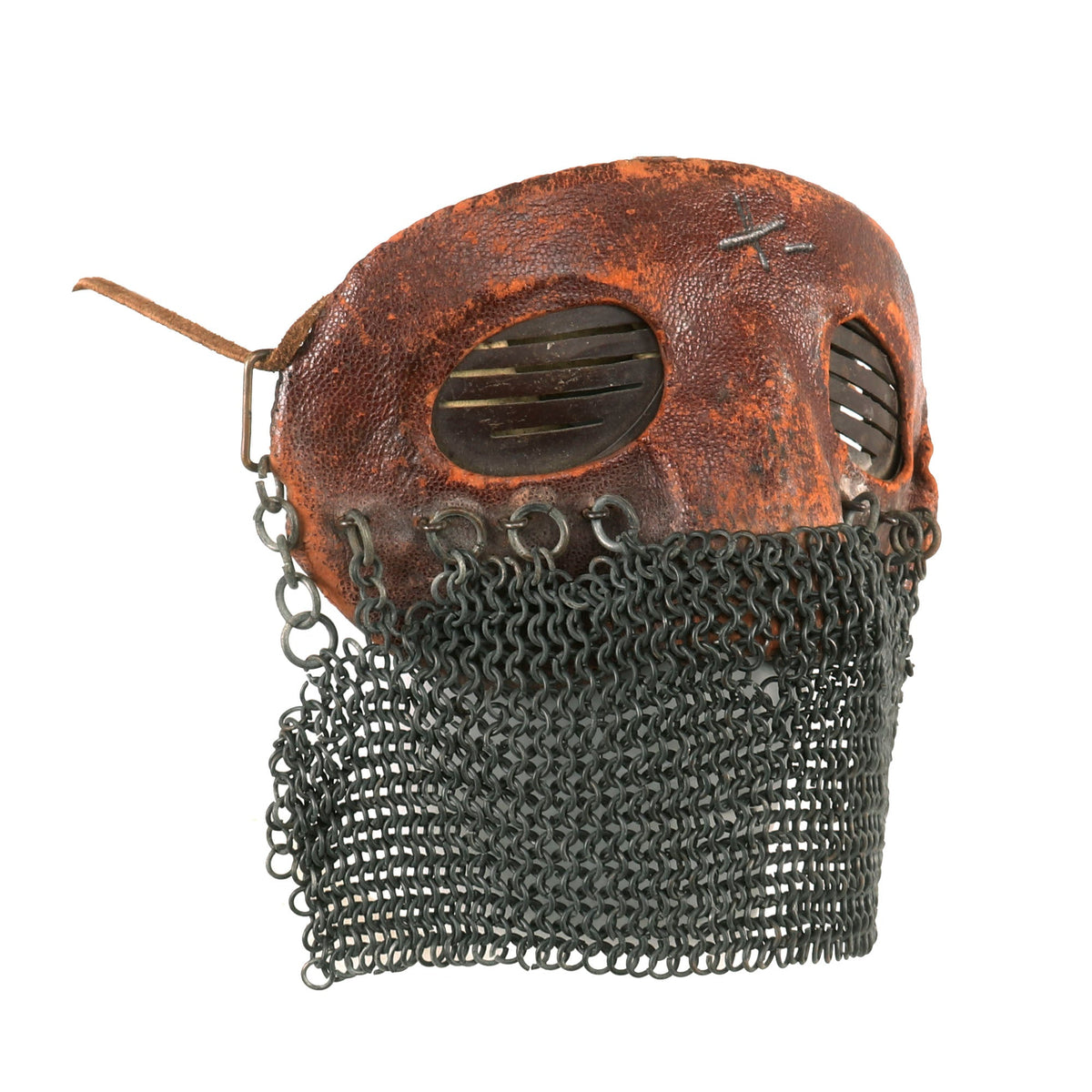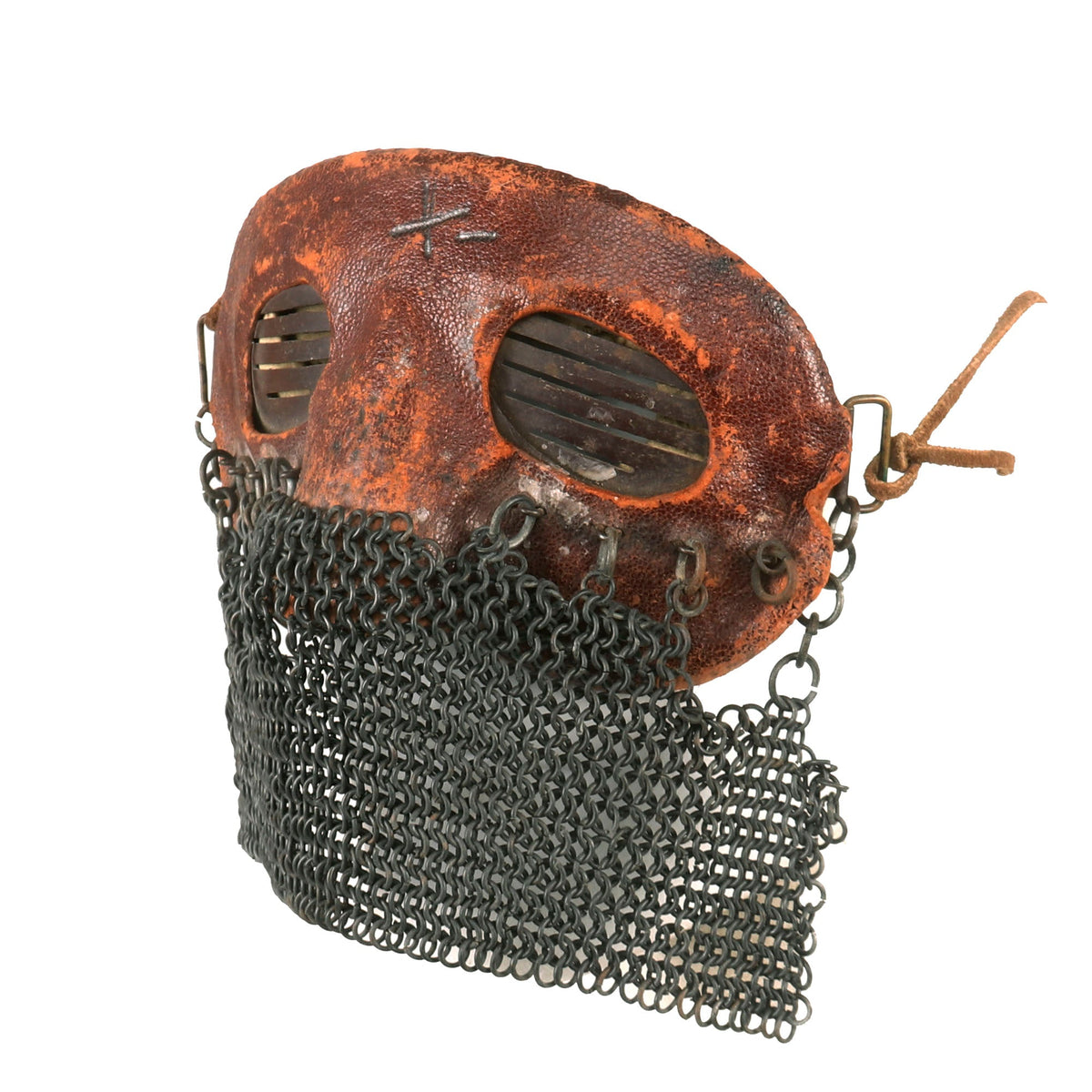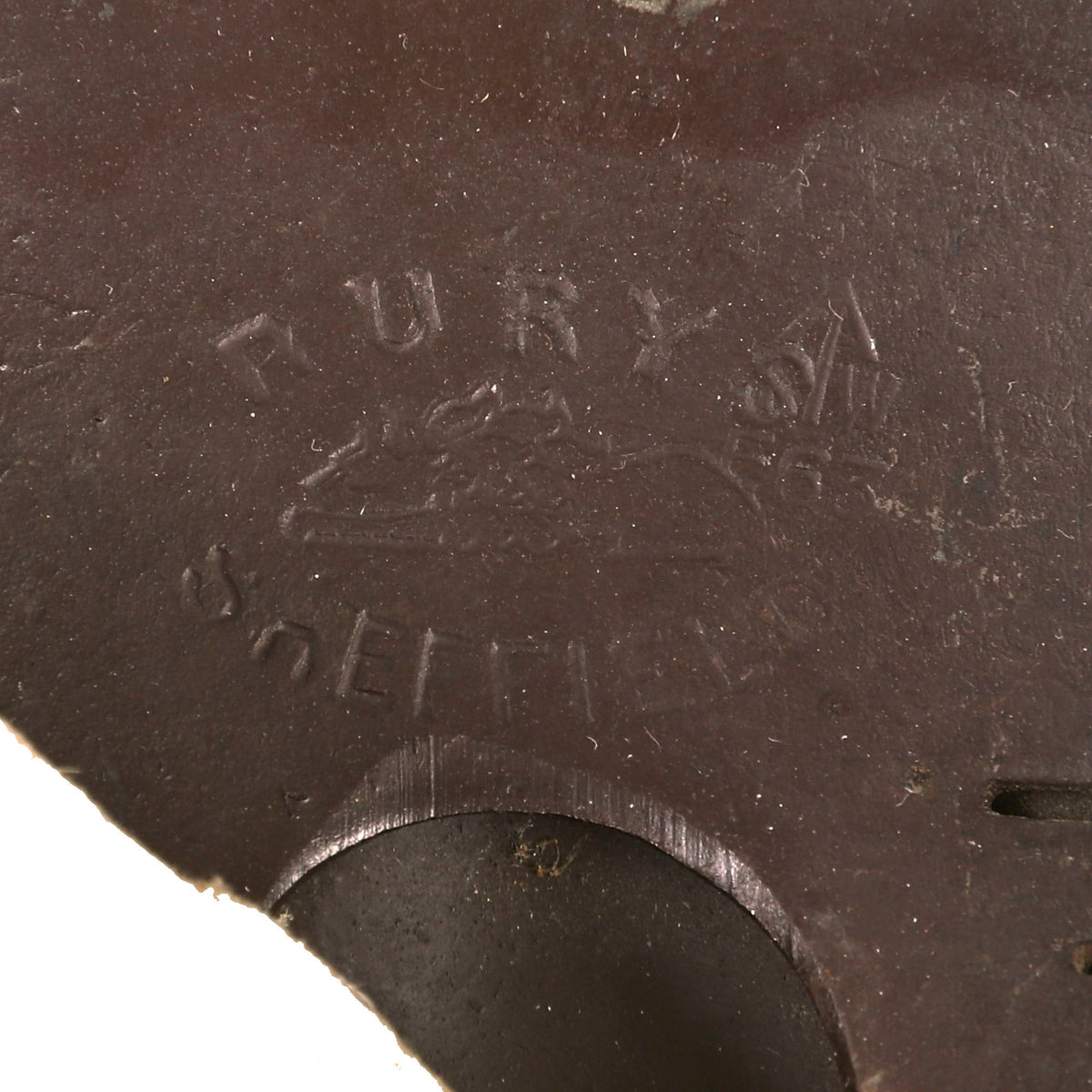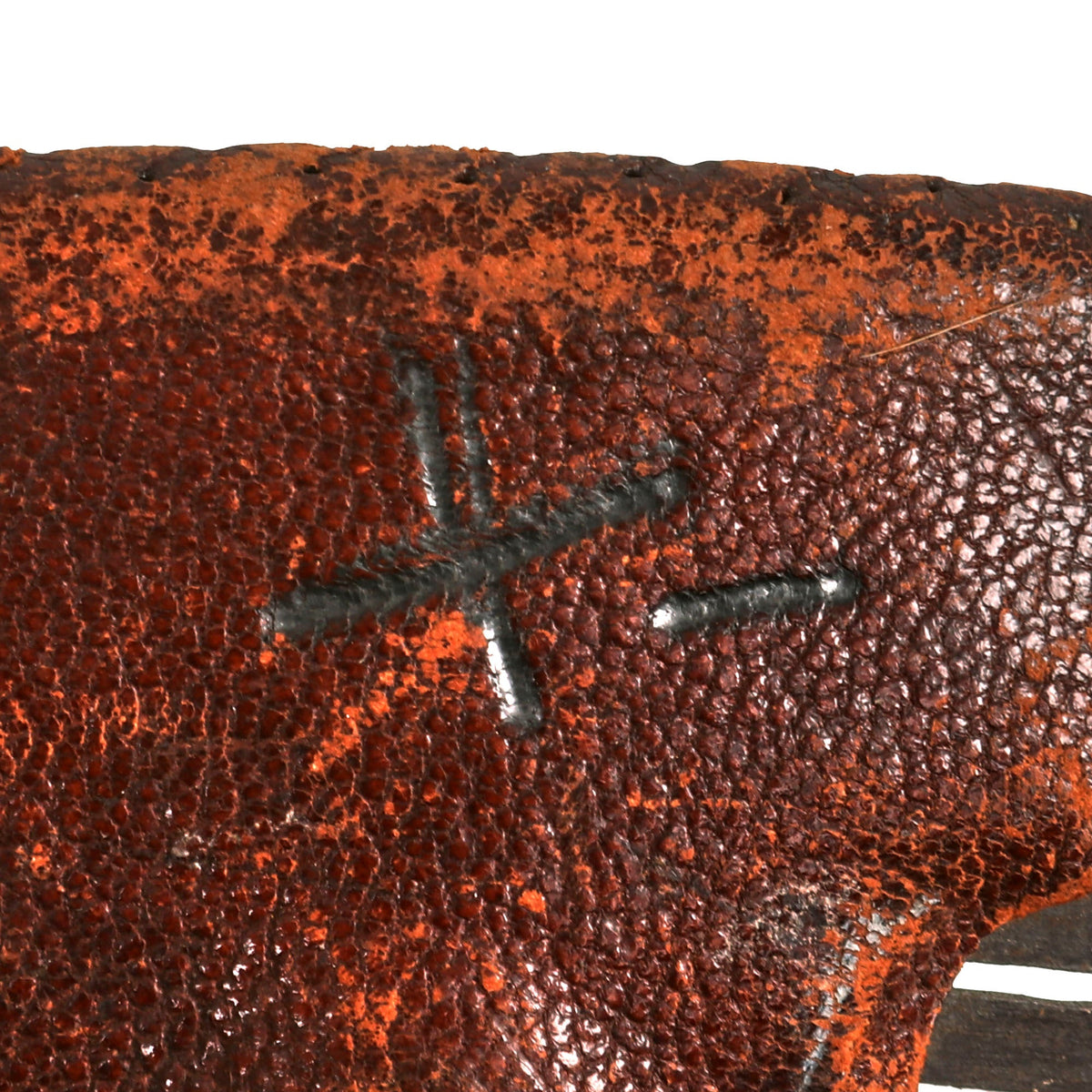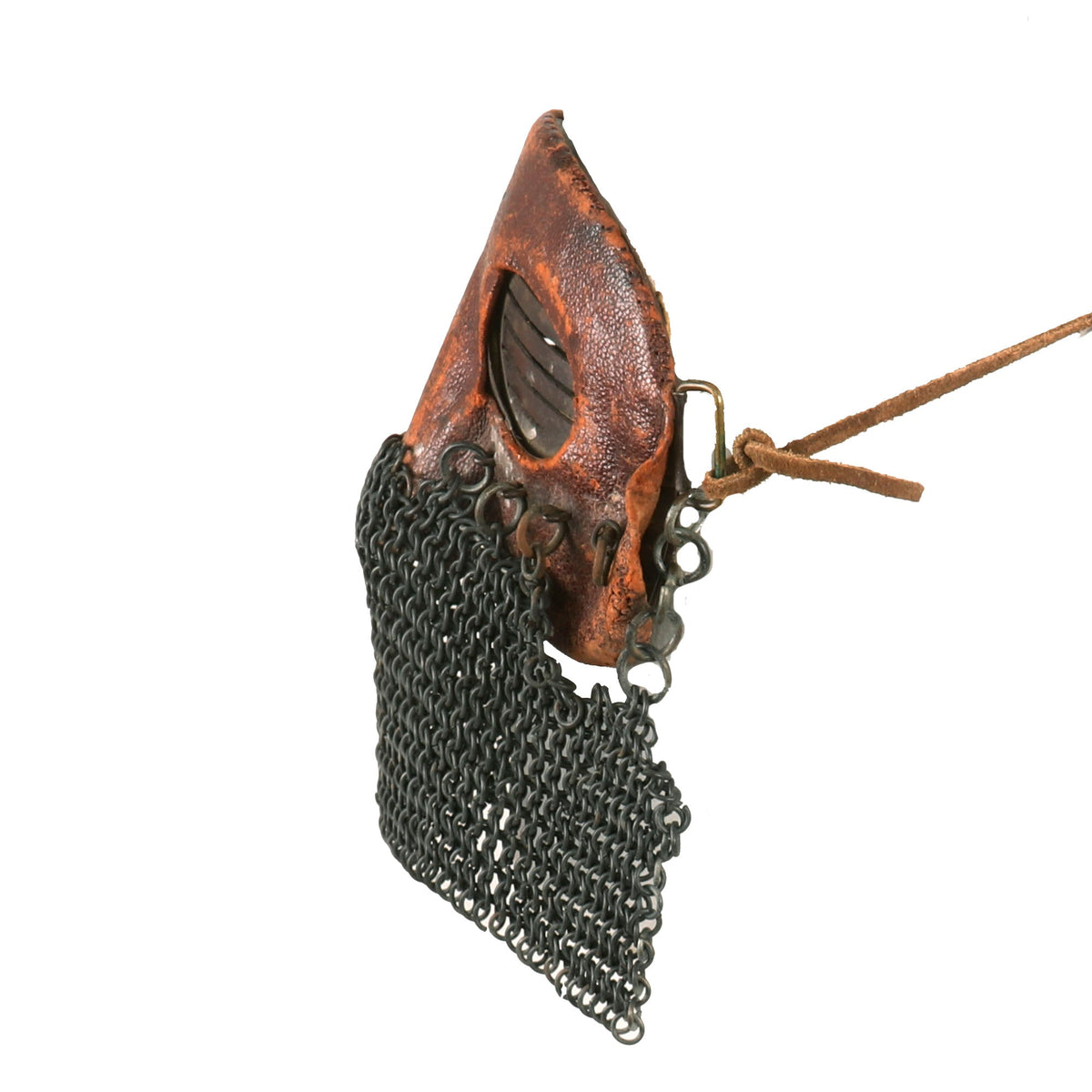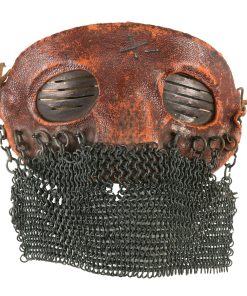Original British WWI Tanker Leather Covered Splatter Mask with Chainmail Mouth Guard by Rury’s of Sheffield – Royal Tank Regiment Original Items
$ 2.495,00 $ 623,75
Original Item: Only One Available. This is a phenomenal example of an extremely scarce WWI Tanker’s mask. This is a wonderful example and shows signs of faithful use and is offered with some damage including the interior fabric being almost completely detached from the mask revealing what is almost never seen, the Rury’s of Sheffield Lion Stamp! There are only a few photos of these known, with most stamps being very shallow and therefore don’t remain, but this stamp is nearly complete.
Constructed from steel plate covered in leather, hand sewn, with slotted eyepieces for protection as well as visibility. The bottom is fitted with a chainmail mouth and chin guard, secured to larger rings on the “mask” and also hanging down from the sides. The piece was originally secured to the tanker’s head by two cotton tie straps located to the rear of the neck, but now there is a small leather string attached to one side. Beautifully constructed. There are also some deep pencil marks on the front of the mask, the meaning of which are unknown.
These facemasks were one of the first innovations to help protect the crew for shrapnel flying around inside the tank. The war unexpectedly ended in November 1918, with the overthrow of the Kaiser. Even the Americans had estimated the war’s duration to last until 1921 so many excesses in all types of gear resulted.
A lovely example of an exceedingly rare mask that comes more than ready for research & display.
The formation of the Royal Tank Regiment followed the invention of the tank. Tanks were first used at the Battle of Flers–Courcelette in September 1916 during the Battle of the Somme in the First World War. They were at first considered artillery, and crews received artillery pay.[4] At that time the six tank companies were grouped as the Heavy Section of the Machine Gun Corps (MGC). In November 1916 the eight companies then in existence were each expanded to form battalions (still identified by the letters A to H) and designated the Heavy Branch MGC; another seven battalions, I to O, were formed by January 1918, when all the battalions were changed to numbered units. On 28 July 1917, the Heavy Branch was separated from the rest of the Corps by Royal Warrant and given official status as the Tank Corps.[5] The formation of new battalions continued and, by December 1918, 26 had been created though only 25 battalions were equipped with tanks, as the 17th had converted to armored cars in April 1918. The first commander of the Tank Corps was Hugh Elles. The Corps saw much action at the Battle of Cambrai in November 1917.
Fast Shipping with Professional Packaging
Thanks to our longstanding association with UPS FedEx DHL, and other major international carriers, we are able to provide a range of shipping options. Our warehouse staff is expertly trained and will wrap your products according to our exact and precise specifications. Prior to shipping, your goods will be thoroughly examined and securely secured. We ship to thousands clients each day across multiple countries. This shows how we're dedicated to be the largest retailer on the internet. Warehouses and distribution centres can be located throughout Europe as well as the USA.
Note: Orders with more than one item will be assigned a processing date depending on the item.
Before shipping before shipping, we'll conduct a thorough inspection of the items you have ordered. Today, the majority of orders will be delivered within 48 hours. The delivery time will be between 3-7 days.
Returns
The stock is dynamic and we cannot completely manage it because multiple stakeholders are involved, including our factory and warehouse. So the actual stock may alter at any time. It's possible that you may not receive your order once the order has been made.
Our policy is valid for a period of 30 days. If you don't receive the product within 30 days, we are not able to issue a refund or an exchange.
You can only return an item if it is unused and in the same state as the day you received it. You must have the item in its original packaging.
Related products
Uncategorized
Uncategorized
Uncategorized
Uncategorized
Uncategorized
Uncategorized
Uncategorized
Uncategorized
Uncategorized
Australian WWII Owen MK1 Machine Carbine SMG Custom Fabricated Replica with Sling Original Items
Uncategorized
Uncategorized
Uncategorized
Uncategorized
Uncategorized
Uncategorized
Band of Brothers ORIGINAL GERMAN WWII Le. F.H. 18 10.5cm ARTILLERY PIECE Original Items
